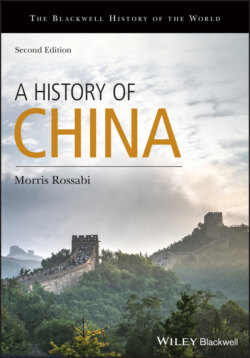Читать книгу A History of China - Morris Rossabi - Страница 28
CHANGES IN SOCIAL STRUCTURE
ОглавлениеPeasants constituted by far the largest segment of the population, although written sources about them are scarce. They grew millet, wheat, rice, hemp seeds, and beans and divided their produce with the lord, who also demanded corvée labor from them. Later writers, notably the philosopher Mencius (the Latinized version of his personal name, Meng Ke), also called Meng Zi (Master Meng), asserted that the land had been divided according to a so-called “well-field system.” Eight families tilled a plot of land each, and they also farmed a ninth plot, which belonged to the lord. The pattern of fields, which looked like a tic-tac-toe board, also resembled the Chinese character for “water well,” lending the system its name. It is unclear whether the well-field system ever actually existed. The sources indicate that the peasants provided tribute and corvée service while the lord offered land and protection – a typical “feudal” arrangement – though it may be stretching the comparison with Europe to refer to the peasants as “serfs.”
Differences in style of life, based on position in the hierarchy, were also apparent. Lords ate far more meat while farmers subsisted on vegetables and soups at best and on stale grain and leaves at worst. Clothing for aristocrats was more elaborate and included more luxurious materials, such as jade and silk, than the dress worn by peasants. The lords led the peasants on hunts in the winter to train them as a military force. The ceremonies practiced by the elite and the peasants did not differ considerably, though the elite’s rituals were more lavish. Even at this early stage, marital ceremonies emphasized the submissiveness of women – though, as will be explained later, women may in fact have been more assertive than this stereotyped portrait. In any event, parents urged the prospective bride to be obedient, and she herself moved into her husband’s home having been advised to serve and to submit to her new family. Despite similarities in marital and ancestral ceremonies, the differences in the lifestyles of the lords and the peasants were striking.
